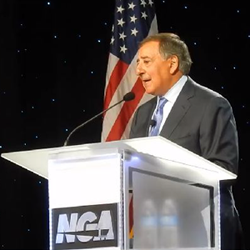 THE DISTINCTION between online and off-line retail sales grows blurrier by the minute, as shoppers meld their consideration and purchasing behaviors into an “all-line” shopping continuum that spans brick, web and mobile.
THE DISTINCTION between online and off-line retail sales grows blurrier by the minute, as shoppers meld their consideration and purchasing behaviors into an “all-line” shopping continuum that spans brick, web and mobile.
“The war for store traffic will be won or lost on digital,” said Margo Georgiades, President of Americas, Google, who spoke in Tucson, AZ last week at the 19th Global Retailing Conference sponsored by the Terry J. Lundgren Center for retailing at the University of Arizona.
In 2010, U.S. retail stores recorded 39 billion “footsteps” in November-December, she reported. By the same period in 2014 that number had declined to 18 billion. Despite that huge drop-off in store traffic, store revenues grew for the same periods from $641B in 2010 to $737B in 2014.
“Those footsteps didn’t go away,” she said. They just went online.”



